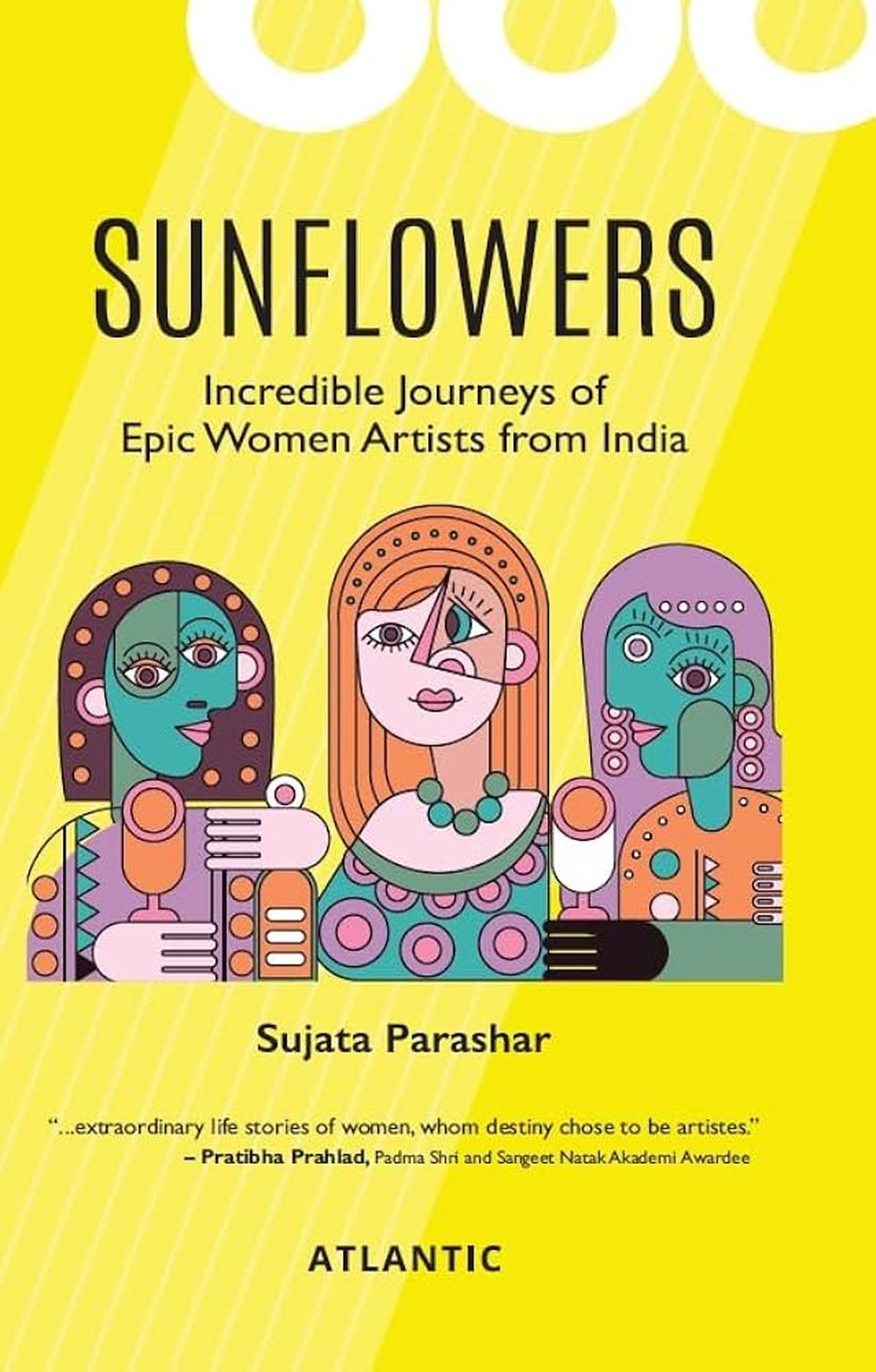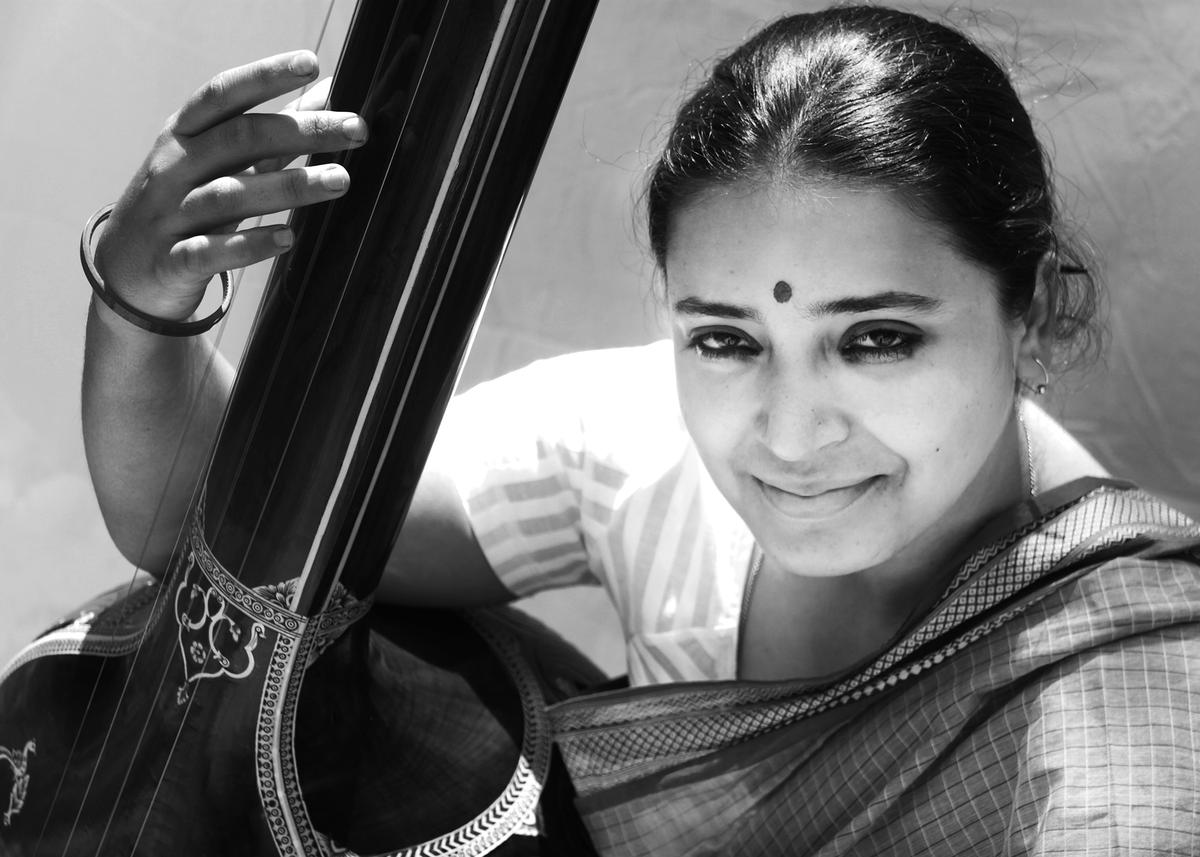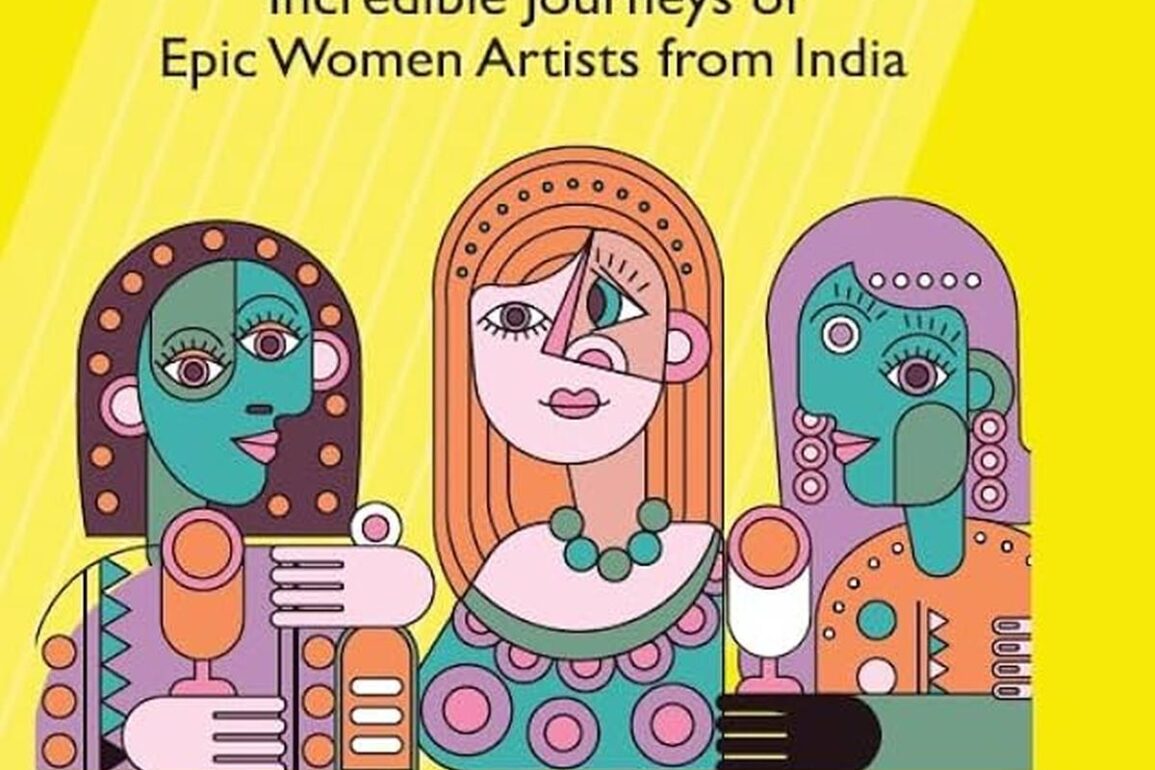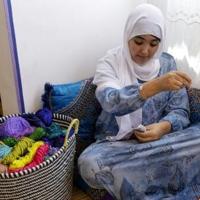Author of 12 books, and a self-confessed accidental writer, Sujata Parashar always wondered how women artistes chose their professions. With questions swirling in her mind, including the challenges for a woman to become an artiste in a patriarchal world, Sujata decided to write about 12 women artistes who have claimed their place in the sun, driven by their dreams in Sunflowers: Incredible Journeys of Epic Women Artists From India.
It wasn’t easy for them, and Sujata underscores how important it is to support art at all levels. “On the one hand, Indians are proud of their culture and creativity,” she writes, “however, on the other hand, the reality is that artistes have often been neglected and not given the respect they deserve.”

The book published by Atlantic takes a peek into world of women artistes
| Photo Credit:
Special Arrangement
She cites the example of Odissi dancer Arushi Mudgal who blossomed primarily because of her talent and also a home where music and classical dances were cherished. But Sujata also accepts that having the right kind of atmosphere isn’t enough. It is a “solitary journey,” and for “art and creativity to bloom, an artiste has to possess certain extraordinary inherent qualities rather than just a privileged background to be noticed and celebrated by the world.”
For Choiti Ghosh, object theatre artiste and puppeteer, performances in ‘jatras’ or plays began when she was three years old in her grandfather’s ‘jatra’ troupe. With an uncanny ability to think out of the box, Choiti took to the idea of Object Theatre in her 30s. It is a performing arts form with roots in Europe. Object Theatre uses everyday objects as symbols to convey ideas and stories. “I was the only practitioner in the country and had to build it from scratch,” says Choiti. In 2011, she set up Tram Arts Trust, and has produced many successful plays over the years, using objects found in daily life filling in for words.

Object theatre artiste and puppeteer Choiti Ghosh.
| Photo Credit:
Special Arrangement
Hina Siddiqui, who is a queer, neurodivergent transmedia storyteller, processed her “emotions in a theatrical space” because she didn’t know where else to do it. Her autism and ADHD were diagnosed much later, and she realised why her childhood was so difficult. Things changed when Hina’s one-act play met with success, and she began to think of a career in theatre, despite her struggles with identity for a long time.
Among the other artistes, Sujata picked are Kanika Dhillon, author, screenwriter and producer, who was born in Amritsar and works in Mumbai, dhrupad vocalist Pelva Naik, Madhubani artist Sweta Jha, stand-up comic, actor and academic Preeti Das, sufi singer Vusat Iqbal Khan and others.

Dhrupad singer Pelva Naik
| Photo Credit:
Special Arrangement
Some of them, like Sweta, turned their hobbies into a profession after marriage. Others like Vusat are continuing the legacy of her father, sufi singer Ustad Ahmed Iqbal Khan, but also bringing her own ideas into an old tradition. She is now recognised as a “pioneer of musical dastangoi”, which is a form of storytelling in Urdu.
The lives of Arushi, Choiti, Hina and others will give readers an inkling of how wide Sujata cast her net to tell the stories. She looked at diverse geographies, backgrounds and different experiences and challenges, and the stories will inspire aspiring artistes.
This post was originally published on this site be sure to check out more of their content









Email
Remove
SEE ALL